
ISSN 1004-5759 CN 62-1105/S

Acta Prataculturae Sinica ›› 2022, Vol. 31 ›› Issue (2): 52-61.DOI: 10.11686/cyxb2021207
Previous Articles Next Articles
Qiang XING1,2( ), Jun QIN1, Yong-hong HU1(
), Jun QIN1, Yong-hong HU1( )
)
Received:2021-05-10
Revised:2021-07-07
Online:2022-02-20
Published:2021-12-22
Contact:
Yong-hong HU
Qiang XING, Jun QIN, Yong-hong HU. Effects of different trampling intensities on three species of warm season turfgrass[J]. Acta Prataculturae Sinica, 2022, 31(2): 52-61.
品种 Variety | 重度践踏 Strengthen trampling | 中度践踏 Medium trampling | 轻度践踏 Light trampling | CK |
|---|---|---|---|---|
结缕草 Z. japonica ‘Belair’ | 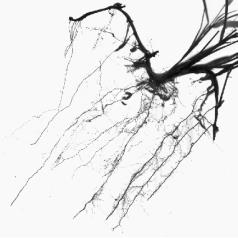 | 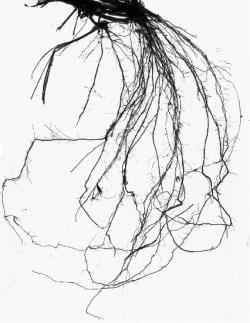 | 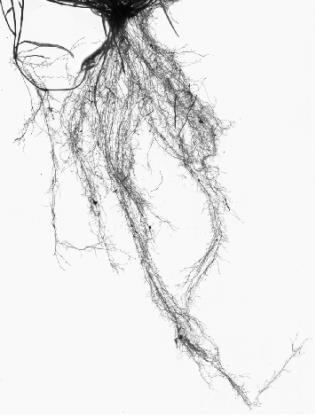 | 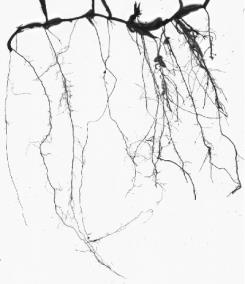 |
海滨雀稗 P. vaginatum‘SeaIsle2000’ |  | 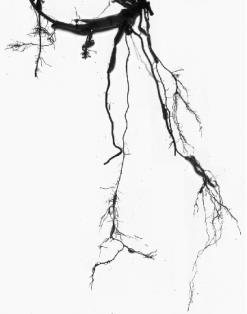 | 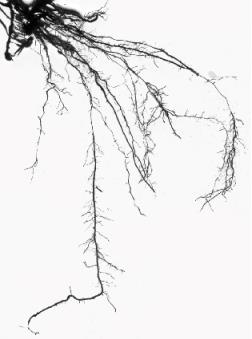 |  |
杂交狗牙根 C. dactylon×C.transvadlensis ‘Tifdwarf’ |  |  | 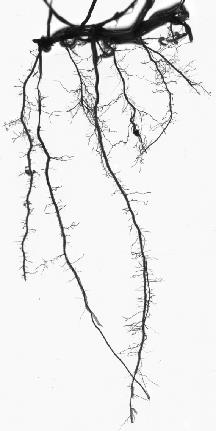 | 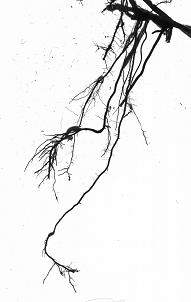 |
Table 1 Effects of different trampling intensity on root of single turfgrass
品种 Variety | 重度践踏 Strengthen trampling | 中度践踏 Medium trampling | 轻度践踏 Light trampling | CK |
|---|---|---|---|---|
结缕草 Z. japonica ‘Belair’ |  |  |  |  |
海滨雀稗 P. vaginatum‘SeaIsle2000’ |  |  |  |  |
杂交狗牙根 C. dactylon×C.transvadlensis ‘Tifdwarf’ |  |  |  |  |
践踏处理 Traffic treatments | 轻度Light | 中度Medium | 重度Strengthen | ||||||
|---|---|---|---|---|---|---|---|---|---|
| 结缕草 ‘Belair’ | 海滨雀稗‘SeaIsle2000’ | 杂交狗牙根 ‘Tifdwarf’ | 结缕草 ‘Belair’ | 海滨雀稗‘SeaIsle2000’ | 杂交狗牙根 ‘Tifdwarf’ | 结缕草 ‘Belair’ | 海滨雀稗‘SeaIsle2000’ | 杂交狗牙根 ‘Tifdwarf’ | |
| 颜色Colour | 0.586 | 1.000 | 0.000 | 0.000 | 0.744 | 1.000 | 0.000 | 0.661 | 0.277 |
| 密度 Density | 1.000 | 0.291 | 0.000 | 0.992 | 0.000 | 1.000 | 0.000 | 0.613 | 1.000 |
| 植被指数NDVI | 0.000 | 0.436 | 1.000 | 0.000 | 1.000 | 1.000 | 0.000 | 1.000 | 0.277 |
| 草层高度Turf height | 0.780 | 0.000 | 1.000 | 1.000 | 0.000 | 0.082 | 1.000 | 0.000 | 0.438 |
| 根总长Total root length | 0.459 | 1.000 | 0.000 | 0.000 | 1.000 | 0.471 | 0.061 | 0.000 | 1.000 |
| 根平均直径Average root diametter | 1.000 | 0.000 | 0.634 | 0.000 | 0.313 | 1.000 | 0.000 | 1.000 | 0.759 |
| 根表面积Root surface area | 0.752 | 1.000 | 0.000 | 0.000 | 0.683 | 1.000 | 0.000 | 0.904 | 1.000 |
| 根系体积Root volume | 1.000 | 0.886 | 0.000 | 0.000 | 0.486 | 1.000 | 0.000 | 1.000 | 0.854 |
| 再生速度Regrowth rate | 1.000 | 0.122 | 0.000 | 1.000 | 0.424 | 0.000 | 1.000 | 0.295 | 0.000 |
| 草屑总量Grass elippings | 1.000 | 0.000 | 0.096 | 0.997 | 1.000 | 0.000 | 1.000 | 0.000 | 0.113 |
| 根冠比Root to shoot ratio | 1.000 | 0.170 | 0.000 | 1.000 | 0.000 | 0.149 | 1.000 | 0.203 | 0.000 |
| 综值Integrated value | 0.780 | 0.446 | 0.248 | 0.454 | 0.514 | 0.609 | 0.369 | 0.516 | 0.520 |
Table 2 Comprehensive assessment of the wear tolerance of turfgrass under the different traffic stresses
践踏处理 Traffic treatments | 轻度Light | 中度Medium | 重度Strengthen | ||||||
|---|---|---|---|---|---|---|---|---|---|
| 结缕草 ‘Belair’ | 海滨雀稗‘SeaIsle2000’ | 杂交狗牙根 ‘Tifdwarf’ | 结缕草 ‘Belair’ | 海滨雀稗‘SeaIsle2000’ | 杂交狗牙根 ‘Tifdwarf’ | 结缕草 ‘Belair’ | 海滨雀稗‘SeaIsle2000’ | 杂交狗牙根 ‘Tifdwarf’ | |
| 颜色Colour | 0.586 | 1.000 | 0.000 | 0.000 | 0.744 | 1.000 | 0.000 | 0.661 | 0.277 |
| 密度 Density | 1.000 | 0.291 | 0.000 | 0.992 | 0.000 | 1.000 | 0.000 | 0.613 | 1.000 |
| 植被指数NDVI | 0.000 | 0.436 | 1.000 | 0.000 | 1.000 | 1.000 | 0.000 | 1.000 | 0.277 |
| 草层高度Turf height | 0.780 | 0.000 | 1.000 | 1.000 | 0.000 | 0.082 | 1.000 | 0.000 | 0.438 |
| 根总长Total root length | 0.459 | 1.000 | 0.000 | 0.000 | 1.000 | 0.471 | 0.061 | 0.000 | 1.000 |
| 根平均直径Average root diametter | 1.000 | 0.000 | 0.634 | 0.000 | 0.313 | 1.000 | 0.000 | 1.000 | 0.759 |
| 根表面积Root surface area | 0.752 | 1.000 | 0.000 | 0.000 | 0.683 | 1.000 | 0.000 | 0.904 | 1.000 |
| 根系体积Root volume | 1.000 | 0.886 | 0.000 | 0.000 | 0.486 | 1.000 | 0.000 | 1.000 | 0.854 |
| 再生速度Regrowth rate | 1.000 | 0.122 | 0.000 | 1.000 | 0.424 | 0.000 | 1.000 | 0.295 | 0.000 |
| 草屑总量Grass elippings | 1.000 | 0.000 | 0.096 | 0.997 | 1.000 | 0.000 | 1.000 | 0.000 | 0.113 |
| 根冠比Root to shoot ratio | 1.000 | 0.170 | 0.000 | 1.000 | 0.000 | 0.149 | 1.000 | 0.203 | 0.000 |
| 综值Integrated value | 0.780 | 0.446 | 0.248 | 0.454 | 0.514 | 0.609 | 0.369 | 0.516 | 0.520 |
| 1 | Zhou B X, Sun J X. The principle and manufacture of turf trampler. Journal of Gansu Agricultural University, 1994, 29(1): 93-95. |
| 周保鑫, 孙吉雄. 草坪践踏器的原理及其研制. 甘肃农业大学学报, 1994, 29(1): 93-95. | |
| 2 | Huang X L, Yang Z M. Research progress on traffic tolerance of sport turf with different turfgrass species and turf beds. Pratacultural Science, 2009, 26(6): 180-186. |
| 黄晓露, 杨志民. 不同草种和床基的运动型草坪耐践踏性研究进展. 草业科学, 2009, 26(6): 180-186. | |
| 3 | Cattani D J, Clark K W. Influence of wear-stress on turf-grass growth components and visual density ratings. Canadian Journal of Plant Science, 1991, 71(1): 305-308. |
| 4 | Zhou L S, Dai Q G, Zhang H C, et al. Effects of different trampling intensities on bermudagrass and manilagrass. Pratacultural Science, 2005, 22(12): 77-81. |
| 周兰胜, 戴其根, 张洪程, 等. 不同践踏强度对狗牙根和马尼拉形态生理的影响. 草业科学, 2005, 22(12): 77-81. | |
| 5 | Yang X Y, Li D D, Liu J X, et al. Evaluation of trampling resistance of two superior varieties of warm-season turfgrass. Pratacultural Science, 2018, 35(1): 54-62. |
| 杨向阳, 李丹丹, 刘建秀, 等. 两种暖季型草坪草优良品种耐践踏性评价. 草业科学, 2018, 35(1): 54-62. | |
| 6 | Liu T Z, Wang X S, Zhang J M. Development of a novel traffic simulator and evaluation of warm-season turfgrass traffic tolerance in field experiments. Acta Prataculturae Sinica, 2019, 28(12): 41-52. |
| 刘天增, 王旭盛, 张巨明. 新型草坪模拟践踏器的研制及暖季型草坪草耐践踏性评价. 草业学报, 2019, 28(12): 41-52. | |
| 7 | Buttery B R, Tan C S, Drury C F, et al. The effects of soil compaction, soil moisture and soil type on growth and nodulation of soybean and common bean. Canadian Journal of Plant Science, 1998, 78(4): 571-576. |
| 8 | Masle J, Passioura J B. The effect of soil strength on the growth of young wheat plants. Functional Plant Biology, 1987, 14(6): 643-656. |
| 9 | Atwell B J. The effect of soil compaction on wheat during early tillering. I. Growth, development and root structure. New Phytologist, 1990, 115(1): 29-35. |
| 10 | Goodman A M, Ennos A R. The effects of soil bulk density on the morphology and anchorage mechanics of the systems of sunflower and maize. Annals of Botany, 1999, 83(3): 293-302. |
| 11 | Oussible M, Crookston R K, Larson W E. Subsurface compaction reduces the root and shoot growth and grain yield of wheat. Agronomy Journal, 1992, 84(1): 34-38. |
| 12 | Yin S X. Treat the trampling problem of the lawn correctly. China Flowers & Horticulture, 2001(13): 28. |
| 尹淑霞. 正确对待草坪的践踏问题. 中国花卉园艺, 2001(13): 28. | |
| 13 | Chen L, Liu Z H, Zhao H Y, et al. Study on trample intensity and restoration system of turf sport field. Grassland and Turf, 2002(4): 28-30. |
| 陈莉, 刘照辉, 赵红洋, 等. 运动场草坪践踏强度及其恢复系的研究. 草原与草坪, 2002(4): 28-30. | |
| 14 | Zhan M C, Xiang Z X. Effect of ‘Monument’ herbicide on over seeded turf grass. Pratacultural Science, 2018, 35(6): 1393-1399. |
| 湛迈城, 向佐湘. 除草剂‘抹绿’对春季交播草坪草的影响. 草业科学, 2018, 35(6): 1393-1399. | |
| 15 | Meng X. Effect of different sand/soil ratio on the recovery ability of hybrid burmuda grass after trampling. Nanjing: Nanjing Agricultural University, 2011. |
| 孟鑫. 不同沙土配比对践踏后杂交狗牙根草坪恢复能力的影响. 南京: 南京农业大学, 2011. | |
| 16 | Zhou L S, Dai Q G, Zhang H C, et al. Effect of different trampling intensities on manila grass. Journal of Yangzhou University (Agricultural and Life Science Edition), 2006, 27(1): 85-90. |
| 周兰胜, 戴其根, 张洪程, 等. 践踏胁迫对马尼拉草坪的影响. 扬州大学学报(农业与生命科学院), 2006, 27(1): 85-90. | |
| 17 | An Y, Chen L J, Meng H L, et al. Effect traffic stresses on phenotypic traits of Zoysia matrella. Acta Agrestia Sinica, 2005, 13(4): 299-303. |
| 安渊, 陈丽君, 孟慧琳, 等. 不同践踏强度对沟叶结缕草坪用性状的影响. 草地学报, 2005, 13(4): 299-303. | |
| 18 | Ren Y K, Gan Y M, Li Z D, et al. Research progress of morphological, physiological and anatomincal characteristics associated with turfgrass wear tolerance. Journal of Sichuan Grassland and Forage Science, 2003(4): 14-16. |
| 任永宽, 干友民, 李志丹, 等. 草坪草耐践踏性的形态学、生理学及解剖学研究进展. 四川草原, 2003(4): 14-16. | |
| 19 | Wang Y, Zhang M, Zhang X Y, et al. Comparative studies on elasticity and scrape tolerance characters of Zoysia japonica and Poa pratensis. Pratacultural Science, 2002, 19(2): 56-59. |
| 王艳, 张绵, 张学勇, 等. 结缕草与草地早熟禾的弹性与耐磨性对比研究. 草业科学, 2002, 19(2): 56-59. | |
| 20 | Song G L. Studies on the effect of traffic stress on the physiology and growth of turfgrass in soccer pitches. Beijing: Beijing Forestry University, 2003. |
| 宋桂龙. 践踏对足球场草坪草生长和生理影响的研究. 北京: 北京林业大学, 2003. | |
| 21 | Roberts E C. Proceedings of the second international turfgrass research conference. Madison: American Society of Agronomy, 1974. |
| 22 | Sills M J, Carrow R N. Turfgrass growth N use, and water use under soil compaction and N fertilization. Agronomy Journal, 1983, 73(3): 488-492. |
| 23 | Canaway P M. A comparison of real and aritificial wear. Journal of the Sports Turf Research Institute, 1981, 57: 108-121. |
| 24 | Wu D M, Hu L, Zheng M Z, et al. Effect of different biogas fertilizer on turf quality and growth. Acta Agrestia Sinica, 2011, 19(3): 473-477. |
| 吴道明, 胡林, 郑苗壮, 等. 不同用量沼肥对高羊茅草坪质量及生长的影响. 草地学报, 2011, 19(3): 473-477. | |
| 25 | Qi F, Zheng Y F, Song G L. Effects of traffic stress on growth of tall fescue and Kentucky bluegrass. Pratacultural Science, 2013, 30(7): 1007-1013. |
| 奇凤, 郑扬帆, 宋桂龙. 践踏对坪用高羊茅和草地早熟禾生长的影响. 草业科学, 2013, 30(7): 1007-1013. | |
| 26 | Li J J, Chen L. Survey of utilization strength of Yangseng sport turf in Xi’an.Grassland and Turf, 2003(2): 40-41, 46. |
| 李建江, 陈莉. 使用强度对足球场草坪影响的研究. 草原与草坪, 2003(2): 40-41, 46. |
| [1] | Peng-fei GAO, Jing ZHANG, Wei-fang FAN, Bing GAO, Hong-juan HAO, Jian-hui WU. Effects of drought stress on root characteristics structure and physiological characteristics of Potentilla bifurca var. glabrata [J]. Acta Prataculturae Sinica, 2022, 31(2): 203-212. |
| [2] | Wu ZHANG, Jin-yu YANG, Xiang LU, Jin-mei LIN, Xue-li NIU. A preliminary study of the antifungal activity and antagonism mechanisms of Trichoderma spp. against turfgrass pathogens [J]. Acta Prataculturae Sinica, 2021, 30(9): 137-149. |
| [3] | Zhen-zhen TAN, Xia-xiang ZHANG, Zhi-min YANG. Research advances in heat resistance of cool-season turfgrasses [J]. Acta Prataculturae Sinica, 2021, 30(9): 193-202. |
| [4] | Tong-rui ZHANG, Fu-cui LI, Lie-bao HAN, Yu-feng CHEN, Gui-long SONG, Ya-nan ZHANG, Jia-bao CHEN, Bin TANG, Wei-hao DOU. Effects of trampling intensity on the quality of artificial carpet hybrid turf [J]. Acta Prataculturae Sinica, 2021, 30(10): 26-40. |
| [5] | Hai-xia HUANG, Qi-qi YANG, Peng CUI, Gang LU, Guo-jun HAN. Changes in morphological and physiological characteristics of Gymnocarposprzewalskii roots in response to water stress [J]. Acta Prataculturae Sinica, 2021, 30(1): 197-207. |
| [6] | Jiao-jiao QIANG, Zhe-hao YAN, Yun CHEN, Bing-hui HE, Han TANG, Xiao-hong LIU. Factors affecting the shear strength of root-soil complexes from three types of grass hedgerows in a karst area [J]. Acta Prataculturae Sinica, 2020, 29(12): 27-37. |
| [7] | XU Sheng-rong, ZHANG En-he, MA Rui-li, WANG Qi, LIU Qing-lin, HUANG Yu-fang. Effects of mulching on soil environment and water utilization by roots of Lycium barbarum [J]. Acta Prataculturae Sinica, 2019, 28(2): 12-22. |
| [8] | XU Xiao-xia, LIU Jin-ping, YOU Ming-hong, ZHANG Xiao-jing, XIE Rui-juan. Effects and trade-offs of shading and drought on clonal growth, and sexual reproduction in Arthraxon hispidus [J]. Acta Prataculturae Sinica, 2019, 28(2): 121-132. |
| [9] | LIU Tian-zeng, WANG Xu-sheng, ZHANG Ju-ming. Development of a novel traffic simulator and evaluation of warm-season turfgrass traffic tolerance in field experiments [J]. Acta Prataculturae Sinica, 2019, 28(12): 41-52. |
| [10] | LUO Han-Fu, SONG Hua-Wei, LIU Tian-Zeng, ZHANG Ju-Ming. Effect of lanthanum on root growth of Paspalum notatum seedlings under aluminum stress [J]. Acta Prataculturae Sinica, 2017, 26(9): 208-213. |
| [11] | WANG Run-Ze, CHEN Yun, LI Tie, PENG Shi-Lei, LIU Zhi-Peng, SHAN Zhi-Jie. Root distribution characteristics of Vetiveria zizanioides and Digitaria sanguinalis and their effects on the anti-erodibility of purple soil in slopelands [J]. Acta Prataculturae Sinica, 2017, 26(7): 45-54. |
| [12] | WANG Yu-Yang, CHEN Ya-Peng. Research progress in water uptake models by plant roots [J]. Acta Prataculturae Sinica, 2017, 26(3): 214-225. |
| [13] | LUO Yong-Qing, ZHAO Xue-Yong, WANG Tao, LI Yu-Qiang, ZUO Xiao-An, DING Jie-Ping. Plant root decomposition and its responses to biotic and abiotic factors [J]. Acta Prataculturae Sinica, 2017, 26(2): 197-207. |
| [14] | WANG Run-Ze, CHEN Yun, LI Tie, ZHOU Tao, HE Bing-Hui, LIU Xiao-Hong, LIU Zhi-Peng, SHAN Zhi-Jie. Impacts of polyacrylamide and grass root systems on micro-aggregates of purple soil in barren hillside badlands [J]. Acta Prataculturae Sinica, 2017, 26(12): 13-23. |
| [15] | NIU Xue-Li, NAN Zhi-Biao. Review of minirhizotron applications for study of fine roots in grassland [J]. Acta Prataculturae Sinica, 2017, 26(11): 205-215. |
| Viewed | ||||||
|
Full text |
|
|||||
|
Abstract |
|
|||||